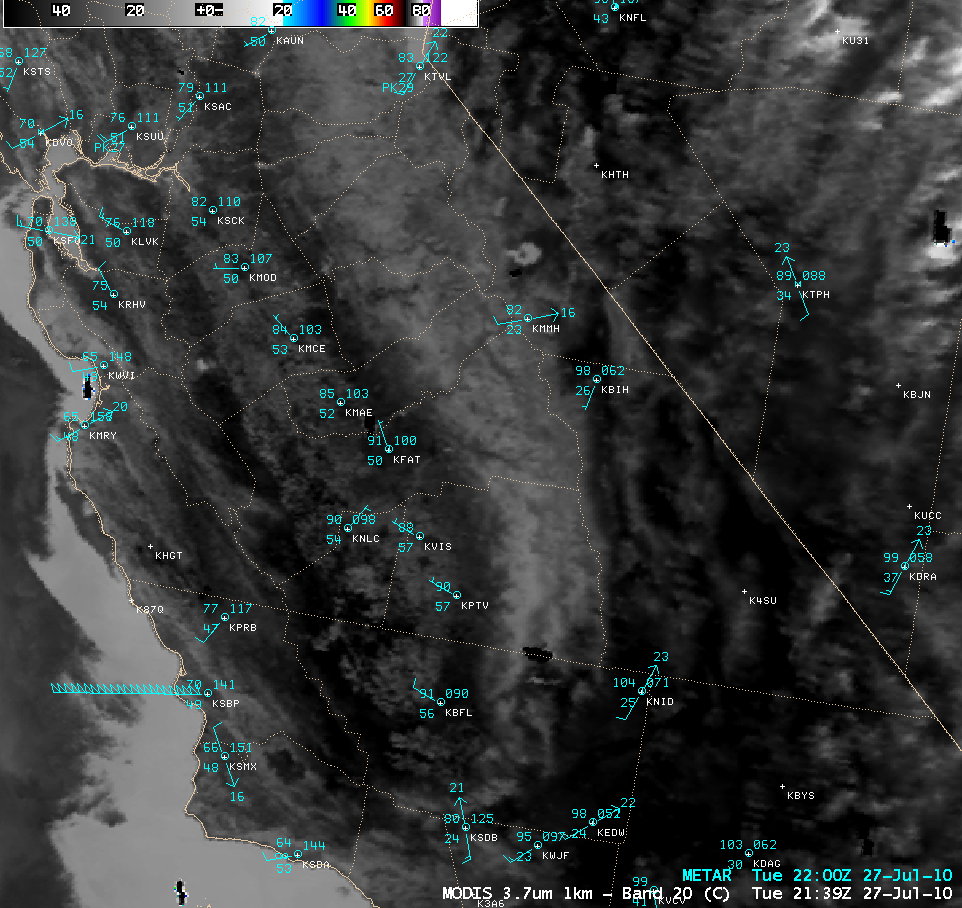Using MODIS imagery to further assess properties of a large California wildfire
A large 16,000 acre wildfire was burning in the Bull Creek Run area near Kernville in central California on 27 July 2010. On a comparison of AWIPS images of the 1-km resolution MODIS 3.7 µm shortwave IR channel and the corresponding MODIS 2.1 µm near-IR “smow/ice” channel (above), the shortwave IR image displayed a large cluster of fire hot spots (dark black pixels) along the Kern / Tulare county line (northeast of Bakersfield KBFL and southeast of Porterville KPTV). Interrogation of this cluster of hot pixels with AWIPS cursor sampling activated would simply display “NO DATA” (since the IR brightness temperatures of the hot fire pixels exceeded that of the maximum IR threshold on AWIPS), which would not allow proper identification of the location of the hottest pixels denoting the most intense areas of fire activity. However, due to the thermal sensitivity of the 2.1 µm near-IR “snow/ice” channel, that particular image did display 3 distinct areas of brighter white pixels which helped to better highlight the location of the hottest, most intense fire activity at that time.
This fire was producing a large smoke plume, but at mid-day the boundary of the smoke plume was difficult to identify on 0.65 µm MODIS visible channel imagery due to the high albedo of the ground surface below. However, the MODIS 1.3 µm “cirrus detection” channel image (below) was helpful in locating the areal coverage of the smoke — this channel is sensitive to airborne particles that are efficient scatterers of light (such as smoke, dust, haze, volcanic ash, etc). By the way, the CIMSS Satellite Blog staff feels that the 1109 knot (1275 mph) wind barb at San Liuis Obispo KSPB is likely erroneous.
A comparison of 250-meter resolution MODIS true color (created using bands 1/4/3) and false color (created using bands 7/2/1) Red/Green/Blue (RGB) images from the SSEC MODIS Today site (below) clearly showed the thick smoke plume moving northward, along with the location of the fire hot spots (brighter pink pixels) at the far southern end of the smoke plume.




